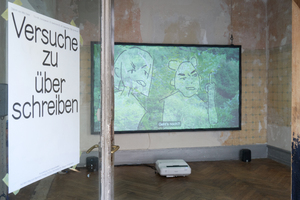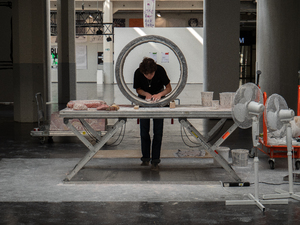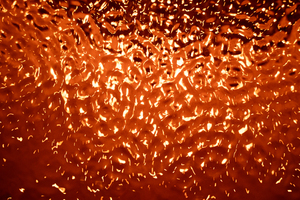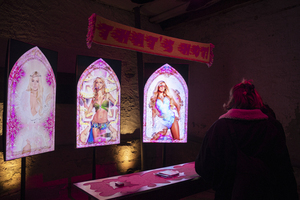Schaufenster Testing TEMP
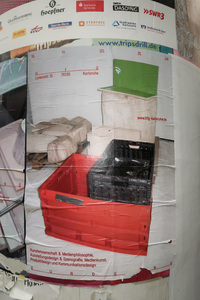
Schaufenster Testing TEMP
| Titel |
|
40 Inhalte
- Seite 1 von 4
Versuche zu überschreiben
- Titel
- Versuche zu überschreiben
- Titel (en)
- Attempts to rewrite
- Untertitel des Projekts/Werks (en)
- Exhibition with three video works: On the way to the station, Prologue: In the zoo, Germania Girl - Concert in the castle!
- Autor/in
- Beschreibung (de)
- Obszön, nerdy und aus Japan: Anime im Fernsehen zu schauen galt in vielen Haushalten in Deutschland als verrufen. Diese Rezeption von Anime entspricht zugleich den exotisierenden Stereotypen, die der (vorgeblich gesittete) Westen auf Japan projiziert. In ihrer Diplomarbeit nutzt Miki Feller Anime als Medium, um über anti-asiatischen Rassismus zu sprechen. Entstanden sind drei Videoarbeiten, die sie in ihrer Ausstellung „Versuche zu überschreiben“ gezeigt hat. Jedes Video erzählt eine eigene Geschichte, die in Karlsruhe spielt, unter anderem am Bahnhof, am Zoo und am Schloss. Es sind Versuche, eine vorherrschend weiße Umgebung zu beschreiben, sich dazu zu positionieren und davon zu distanzieren.
Die Videos wurden in Zusammenarbeit mit folgenden Personen realisiert und ausgestellt: „Versuche zu überschreiben“ mit Max Mandery (Dramaturgische Beratung), Bruno Jacoby (Grafik), Leia Walz (Ausstellungsgestaltung), Jaya Demmer (Textil), Johannes Thimm und Lina Determann (Rampe) / „Auf dem Weg zum Bahnhof“ mit Bruno Jacoby (Grafik) / „Prolog: Im Zoo“ mit Sophia Stadler (Storyboard, Schnitt & Fotos) / „Germania Girl – Konzert im Schloss!“ mit Max Mandery (Dramaturgische Beratung), Bruno Jacoby (Grafik), Yun-Wen Liu (Fotos & Farbkorrektur), Vanessa Bosch (Musik), Ricarda Fischer (Musik & Sounddesign), Meret Bhend und Paulina Mimberg (Farbkorrektur), Luise Peschko (Dialog Editing) sowie Nele Faust, Alejandra Janus, Melanie Berner, Rita Andrulyte, Nini Lü, Jörg Stegmann, Laura Haak und Josefine Scheu (Stimmen).
- Obszön, nerdy und aus Japan: Anime im Fernsehen zu schauen galt in vielen Haushalten in Deutschland als verrufen. Diese Rezeption von Anime entspricht zugleich den exotisierenden Stereotypen, die der (vorgeblich gesittete) Westen auf Japan projiziert. In ihrer Diplomarbeit nutzt Miki Feller Anime als Medium, um über anti-asiatischen Rassismus zu sprechen. Entstanden sind drei Videoarbeiten, die sie in ihrer Ausstellung „Versuche zu überschreiben“ gezeigt hat. Jedes Video erzählt eine eigene Geschichte, die in Karlsruhe spielt, unter anderem am Bahnhof, am Zoo und am Schloss. Es sind Versuche, eine vorherrschend weiße Umgebung zu beschreiben, sich dazu zu positionieren und davon zu distanzieren.
- Beschreibung (en)
- Obscene, nerdy, and from Japan: In many German households, it was forbidden to watch anime on television. This perception of anime mirrors the exoticizing stereotypes projected onto Japan by the (allegedly civilized) West. In her diploma project, Miki Feller addresses anti-Asian racism in Germany by using anime as the medium. She created three video works and showcased them in the exhibition “Versuche zu überschreiben.” Each video tells a story set in Karlsruhe, for example, at the train station, the zoo, and the castle. These videos serve as attempts to describe a predominantly white environment, to position oneself in relation to it, and to distance oneself from it.
The videos were created and presented in collaboration with the following people: "Versuche zu überschreiben" with Max Mandery (dramaturgical consultation), Bruno Jacoby (graphics), Leia Walz (exhibition design), Jaya Demmer (textile), Johannes Thimm and Lina Determann (ramp) / "Auf dem Weg zum Bahnhof" with Bruno Jacoby (graphics) / "Prolog: Im Zoo" with Sophia Stadler (storyboard, editing & photos) / "Germania Girl - Konzert im Schloss!" with Max Mandery (dramaturgical consultation), Bruno Jacoby (graphics), Yun-Wen Liu (photos & color grading), Vanessa Bosch (music), Ricarda Fischer (music & sound design), Meret Bhend and Paulina Mimberg (color grading), Luise Peschko (dialog editing) as well as Nele Faust, Alejandra Janus, Melanie Berner, Rita Andrulyte, Nini Lü, Jörg Stegmann, Laura Haak, and Josefine Scheu (voice acting).
- Obscene, nerdy, and from Japan: In many German households, it was forbidden to watch anime on television. This perception of anime mirrors the exoticizing stereotypes projected onto Japan by the (allegedly civilized) West. In her diploma project, Miki Feller addresses anti-Asian racism in Germany by using anime as the medium. She created three video works and showcased them in the exhibition “Versuche zu überschreiben.” Each video tells a story set in Karlsruhe, for example, at the train station, the zoo, and the castle. These videos serve as attempts to describe a predominantly white environment, to position oneself in relation to it, and to distance oneself from it.
- Typ des Projekts/Werks
- Schlagworte
- Datierung
- 22.09.2023 - 24.09.2023
- Mitwirkende
- Dank an
- Sprache
- Ort: Institution
- Stadt
- Land
- Titel
- Versuche zu überschreiben
- Projektleiter/in
- Semester
- Studiengang
- Typ der Abschlussarbeit
- Importiert am
- 04.03.2024
- Übergeordnete Sets
- 3
- Set enthält
- 0 9
Vordiplom Hannah Gebert
- Titel
- Vordiplom Hannah Gebert
- Titel (en)
- "fake it till you make it"
- Autor/in
- Beschreibung (de)
- Stuckmarmor ist eine historische Stucktechnik des 16. und 17. Jahrhunderts aus Italien, die für ihre Marmorimitation bekannt ist. Dabei wurden Gips, Wasser, Pigmente und tierischer Leim gemischt, um marmorähnliche Oberflächen zu schaffen.
"Fake it till you make it" ist eine Erkundung dieses traditionellen Handwerks. Ziel ist es, die alte Kunst der Marmorimitation wiederzubeleben und ihre ästhetischen Werte in der heutigen Welt zu präsentieren. Darüber hinaus befasst sich das Projekt mit der Frage, was "echt" und was "unecht" ist, und untersucht die Rolle der Inszenierung. Inspiriert von den drei Teilen einer Säule (Basis, Schaft, Kapitell) habe ich drei Objekte entwickelt, die als Einzelstücke im Raum zu finden sind. Alle drei Objekte sind aus Holz gefertigt, zwei davon durch ein Stahlgerüst stabilisiert. Die Unterkonstruktion wurde dann mit Streckmetall verkleidet, verputzt und diente schließlich als Untergrund für den Stuckmarmor. Ein Making-of-Video zeigt die Herstellung des Stuckmarmors. Jedes der Objekte ist auf eine andere Art und Weise verkleidet, um die Konstruktion nicht immer zu verbergen, sondern sie vielmehr zu enthüllen, ganz nach dem Motto "fake it till you make it".
- Stuckmarmor ist eine historische Stucktechnik des 16. und 17. Jahrhunderts aus Italien, die für ihre Marmorimitation bekannt ist. Dabei wurden Gips, Wasser, Pigmente und tierischer Leim gemischt, um marmorähnliche Oberflächen zu schaffen.
- Beschreibung (en)
- Stucco marble is a historic plasterwork technique originating from 16th and 17th-century Italy, celebrated for its imitation of marble. This involved blending gypsum plaster, water, pigments, and animal glue to create marble-like surfaces.
„fake it till you make it“ is an exploration of this traditional craft of stucco marble. The aim is to revive the ancient art of imitating marble and to present its aesthetic values in today‘s world. In addition, the project will address the question of what is „real“ and what is „fake“ and examine the role of staging. Inspired by the three parts of a column (base, shaft, capital) I have developed three objects that can be found as individual pieces in the room. All three objects are made of wood, two of them stabilized by a steel framework. Ribbed expanded metal lath was then stapled onto the wood and plastered, serving as the base for the stucco marble. A making of video shows the production of the stucco marble. Each of the objects is covered in a different way, intended not to always conceal the construction but rather to reveal it, embodying the spirit of „fake it till you make it.“
- Stucco marble is a historic plasterwork technique originating from 16th and 17th-century Italy, celebrated for its imitation of marble. This involved blending gypsum plaster, water, pigments, and animal glue to create marble-like surfaces.
- Kategorie
- Typ des Projekts/Werks
- Schlagworte
- Datierung
- 25.06.2024
- Material
- Ort: Institution
- Ort
- An der Säule unter der Lichtbrücke
- Stadt
- Land
- Titel
- Vordiplom Hannah Gebert
- Projektleiter/in
- Studiengang
- Importiert am
- 22.05.2024
- Übergeordnete Sets
- 2
- Set enthält
- 0 13
Wave Talk
- Titel
- Wave Talk
- Autor/in
- Beschreibung (de)
- Die Arbeit "Wave Talk" umfasst eine interaktive Kunstinstallation mit drei Objekten, die sich mit der tiefen philosophischen Frage der Selbsterkenntnis und der wechselseitigen Beziehung zwischen Individuum und Umwelt beschäftigt. Hinterfragt wird die Idee der Identität und Realität: Wie nehmen wir uns selbst wahr und wie wird diese Wahrnehmung durch unsere Umgebung, Handlungen und Worte verändert? Alle Objekte arbeiten mit der Darstellung von Sound (Kymatik). Die Frequenzen setzen das Material in Bewegung und verändern den Ist-Zustand. Die Installation lädt so den Betrachter ein zum Staunen, Besinnen, Meditieren und Erkennen, dass das Selbst nicht statisch, sondern dynamisch ist – ständig im Wandel, geformt und verzerrt durch äußere Einflüsse. Diese Verzerrungen spiegeln wider, wie unser Selbstbild und unsere Realität durch soziale, emotionale und körperliche Resonanzen beeinflusst werden. "Wave Talk" vermittelt die Idee, dass unsere Interaktionen mit der Umwelt eine ständige, nicht verbale Kommunikation darstellen – eine Art stiller Dialog, der die Veränderlichkeit und Sensibilität unserer Wahrnehmung symbolisiert.
Die Objekte:
1. Spiegel: Selbstreflexion und Resonanz
Ein runder Spiegel, der durch einen Näherungssensor und einen Körperschallwandler sanft zu vibrieren beginnt, wenn der Betrachter sich nähert. Die feine Vibration symbolisiert die subtile Resonanz zwischen Mensch und Umgebung und die fragile, fließende Natur der Selbstwahrnehmung – das Selbstbild verändert sich ständig im Austausch mit der Umwelt.
2. Wasserschale: Stimme und Resonanz
Ein kleineres Becken, dessen Wasser durch die Stimme des Betrachters in Schwingung gerät. Die Schwingungen stehen für die Kraft des inneren Ausdrucks, der sich im Außen manifestiert. Worte und Gedanken erzeugen Resonanzen, die sowohl die physische als auch die soziale Welt prägen – in jeder Schwingung offenbart sich die Tiefe des Moments.
3. Wasserbecken (120 cm Durchmesser): Berührung und Schwingung
Ein großes Becken, das auf Berührung reagiert und Wellen über die Wasseroberfläche schickt. Jede Berührung setzt Resonanzen frei, die sich ausbreiten und die Umgebung beeinflussen. Das Objekt verdeutlicht, dass selbst kleinste Handlungen Spuren in der Welt hinterlassen – ein stilles Gespräch zwischen uns und der Unendlichkeit.
- Die Arbeit "Wave Talk" umfasst eine interaktive Kunstinstallation mit drei Objekten, die sich mit der tiefen philosophischen Frage der Selbsterkenntnis und der wechselseitigen Beziehung zwischen Individuum und Umwelt beschäftigt. Hinterfragt wird die Idee der Identität und Realität: Wie nehmen wir uns selbst wahr und wie wird diese Wahrnehmung durch unsere Umgebung, Handlungen und Worte verändert? Alle Objekte arbeiten mit der Darstellung von Sound (Kymatik). Die Frequenzen setzen das Material in Bewegung und verändern den Ist-Zustand. Die Installation lädt so den Betrachter ein zum Staunen, Besinnen, Meditieren und Erkennen, dass das Selbst nicht statisch, sondern dynamisch ist – ständig im Wandel, geformt und verzerrt durch äußere Einflüsse. Diese Verzerrungen spiegeln wider, wie unser Selbstbild und unsere Realität durch soziale, emotionale und körperliche Resonanzen beeinflusst werden. "Wave Talk" vermittelt die Idee, dass unsere Interaktionen mit der Umwelt eine ständige, nicht verbale Kommunikation darstellen – eine Art stiller Dialog, der die Veränderlichkeit und Sensibilität unserer Wahrnehmung symbolisiert.
- Beschreibung (en)
- The work ‘Wave Talk’ comprises an interactive art installation with three objects that deals with the deep philosophical question of self-knowledge and the reciprocal relationship between the individual and the environment. It scrutinises the idea of identity and reality: how do we perceive ourselves, and how is this perception changed by our surroundings, actions, and words? All objects work with the representation of sound (cymatics). The frequencies set the material in motion and change the actual state. The installation thus invites the viewer to marvel, reflect, meditate, and recognise that the self is not static but dynamic—constantly changing, shaped, and distorted by external influences. These distortions reflect how our self-image and our reality are influenced by social, emotional, and physical resonances. ‘Wave Talk’ conveys the idea that our interactions with the environment are a constant, non-verbal communication—a kind of silent dialogue that symbolises the mutability and sensitivity of our perception.
The objects:
1. Mirror: Self-Reflection and Resonance
A round mirror that begins to vibrate gently when the viewer approaches, triggered by a proximity sensor and a tactile transducer. This subtle vibration symbolises the delicate resonance between human and environment, highlighting the fragile, fluid nature of self-perception—constantly shifting in interaction with the world.
2. Small Water Basin: Voice and Resonance
A smaller basin where the water is set in motion by the viewer's voice. The ripples represent the power of inner expression manifesting in the outer world. Words and thoughts create resonances that shape both the physical and social realms—in every vibration, the depth of the moment is revealed.
3. Large Water Basin (120 cm diameter): Touch and Vibration
A large basin that responds to touch by sending waves across the water’s surface. Every touch releases resonances that ripple outward, impacting the surroundings. This piece illustrates that even the smallest actions leave traces in the world—a silent conversation between us and infinity.
- The work ‘Wave Talk’ comprises an interactive art installation with three objects that deals with the deep philosophical question of self-knowledge and the reciprocal relationship between the individual and the environment. It scrutinises the idea of identity and reality: how do we perceive ourselves, and how is this perception changed by our surroundings, actions, and words? All objects work with the representation of sound (cymatics). The frequencies set the material in motion and change the actual state. The installation thus invites the viewer to marvel, reflect, meditate, and recognise that the self is not static but dynamic—constantly changing, shaped, and distorted by external influences. These distortions reflect how our self-image and our reality are influenced by social, emotional, and physical resonances. ‘Wave Talk’ conveys the idea that our interactions with the environment are a constant, non-verbal communication—a kind of silent dialogue that symbolises the mutability and sensitivity of our perception.
- Kategorie
- Typ des Projekts/Werks
- Schlagworte
- Datierung
- 24.10.2024
- Titel
- Wave Talk
- Projektleiter/in
- Semester
- Studiengang
- Typ der Abschlussarbeit
- Importiert am
- 03.11.2024
- Übergeordnete Sets
- 3
- Set enthält
- 0 34
WHERE LEGENDS ARE MADE AND LIES ARE TOLD
- Titel
- WHERE LEGENDS ARE MADE AND LIES ARE TOLD
- Autor/in
- Beschreibung (de)
- WHERE LEGENDS ARE MADE AND LIES ARE TOLD (graduation project). Originated by this divine union of @parishilton @britneyspears @lindsaylohan (aka the Holy Trinity <3) the night of the infamous Bimbo Summit, WLAMALAT is the visual and critical translation of my obsession for the #y2k it-girls and #popculture in general. Mixing a religious with a highly commercial aesthetic, the project questions several topics such as women representation in the mass media, visual/celebrity culture consumption and new belief systems.
- WHERE LEGENDS ARE MADE AND LIES ARE TOLD (graduation project). Originated by this divine union of @parishilton @britneyspears @lindsaylohan (aka the Holy Trinity <3) the night of the infamous Bimbo Summit, WLAMALAT is the visual and critical translation of my obsession for the #y2k it-girls and #popculture in general. Mixing a religious with a highly commercial aesthetic, the project questions several topics such as women representation in the mass media, visual/celebrity culture consumption and new belief systems.
- Beschreibung (en)
- WHERE LEGENDS ARE MADE AND LIES ARE TOLD (graduation project). Originated by this divine union of @parishilton @britneyspears @lindsaylohan (aka the Holy Trinity <3) the night of the infamous Bimbo Summit, WLAMALAT is the visual and critical translation of my obsession for the #y2k it-girls and #popculture in general. Mixing a religious with a highly commercial aesthetic, the project questions several topics such as women representation in the mass media, visual/celebrity culture consumption and new belief systems.
- WHERE LEGENDS ARE MADE AND LIES ARE TOLD (graduation project). Originated by this divine union of @parishilton @britneyspears @lindsaylohan (aka the Holy Trinity <3) the night of the infamous Bimbo Summit, WLAMALAT is the visual and critical translation of my obsession for the #y2k it-girls and #popculture in general. Mixing a religious with a highly commercial aesthetic, the project questions several topics such as women representation in the mass media, visual/celebrity culture consumption and new belief systems.
- Kategorie
- Typ des Projekts/Werks
- Datierung
- 06.12.23
- Dank an
- Ort
- Rudolf 5
- Titel
- WHERE LEGENDS ARE MADE AND LIES ARE TOLD
- Projektleiter/in
- Semester
- Studiengang
- Typ der Abschlussarbeit
- Importiert am
- 05.11.2024
- Übergeordnete Sets
- 1
- Set enthält
- 3 8
